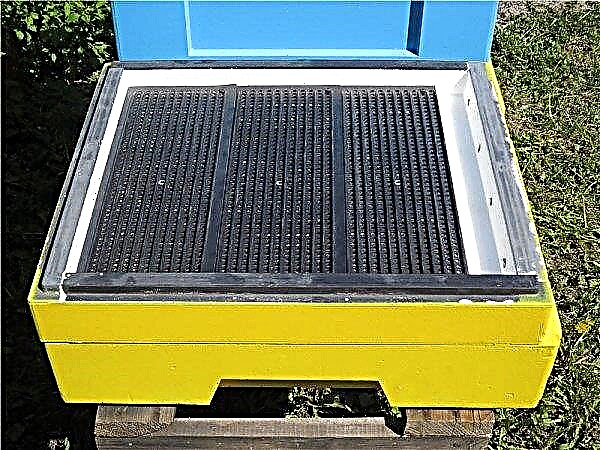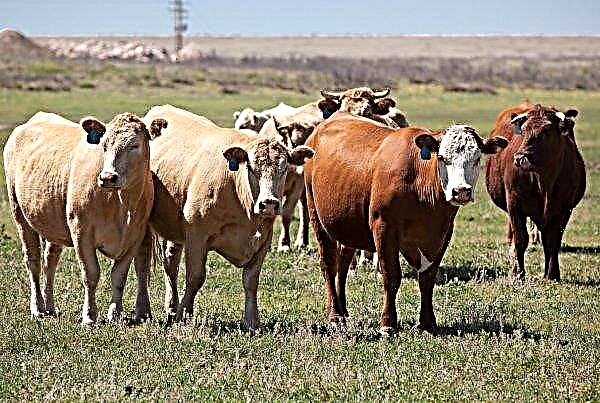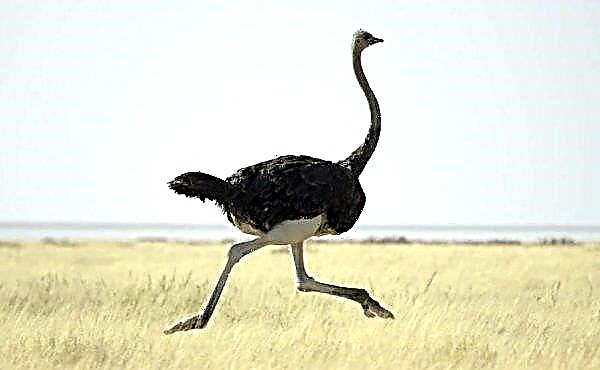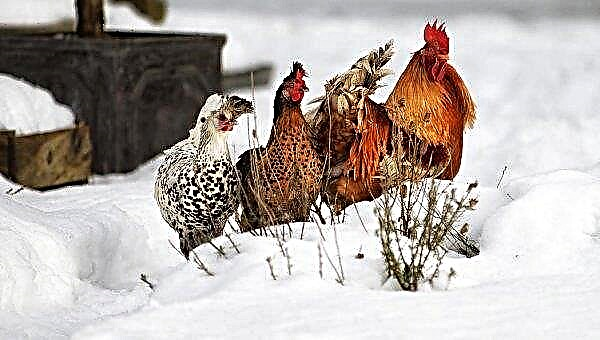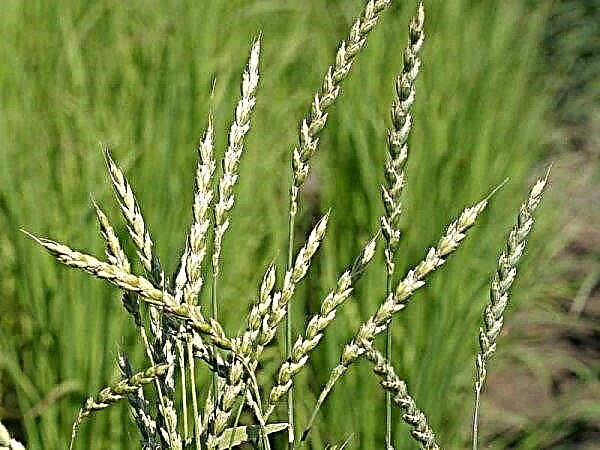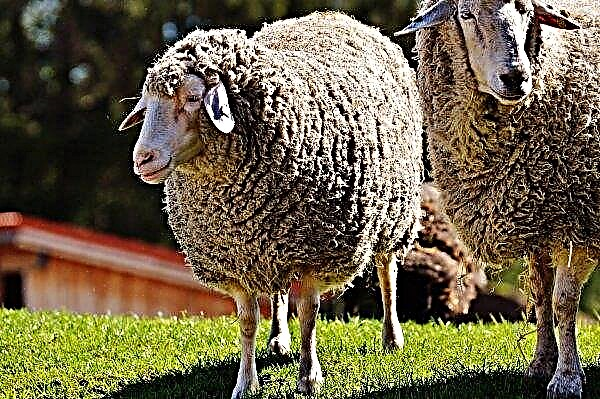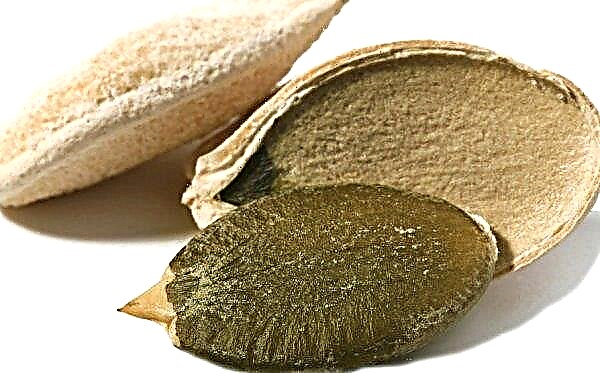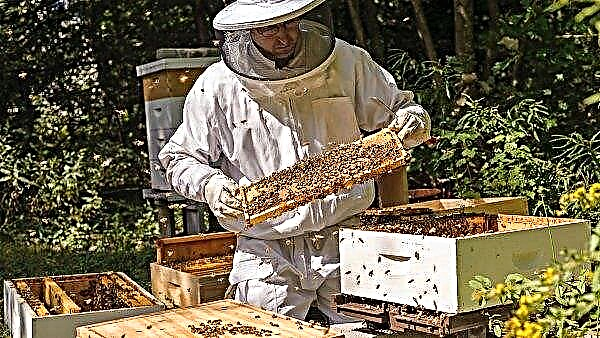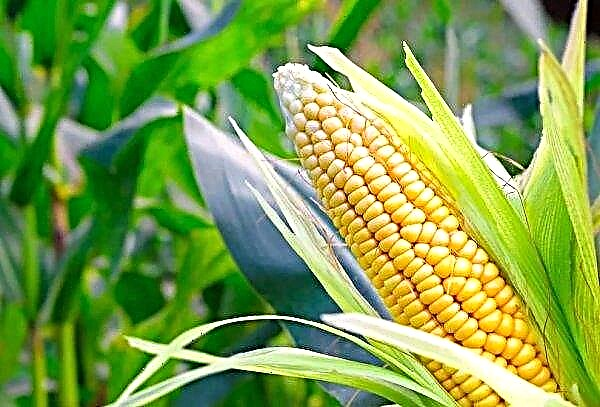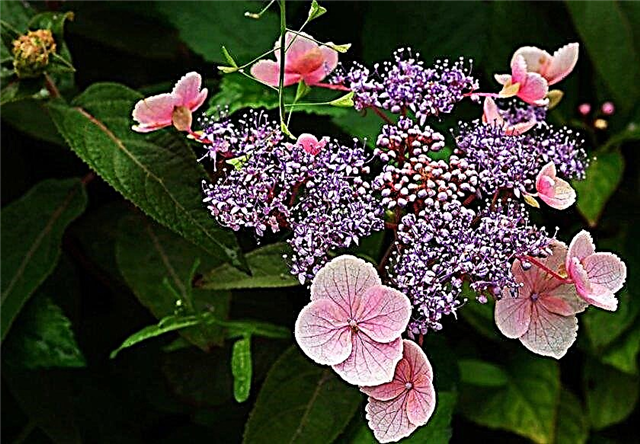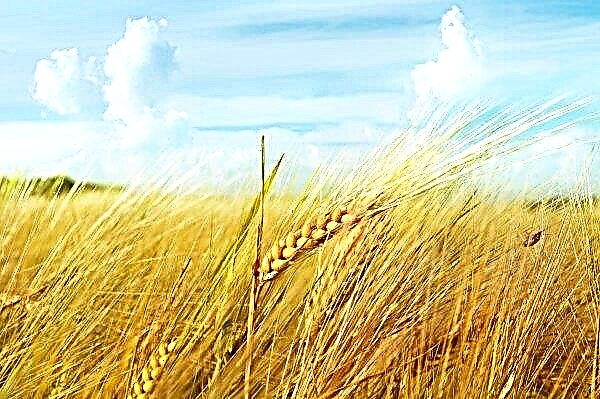Among the great diversity of mountain pine, it is worth highlighting its natural form, Pumilio (Pinus mugo Pumilio), which attracts many gardeners by its small size and decorative appearance. The article will tell you about the agricultural technique of pine growing, care and use in garden design.
Botanical tree description
The natural range of Pinus mugo pine is the mountains of Central and Southeast Europe in the subalpine zone near the forest line, where it forms impenetrable thickets, preventing soil erosion and snow avalanches. Unlike forest pine giants, this species is a dwarf squat shrub with a branched growth habit, which makes plants 1.5–2 wider than their height. This low growth allows the culture to easily survive under huge snow masses and mountain winds.
Latin name - Pinus mugo var. pumilio. Other names - mountain pine Pumilio, Pinus mugo Swiss. Family - Pine (Pinaceae). Type - undersized conifer. Variety - Pumilio (Pumilio).
Botanical Description:
- The crown is thick and dense, prostrate, creeping, hemispherical, pillow-shaped.
- The bark is dark gray, on young wood is smooth, scaly over time.
- The needles are short, up to 2.5–4 cm, two-needle (a bunch of 2 needles grows on the shoots), dense, dark green, intensely colored, slightly twisted and directed upward, sharp and stiff to the touch, stored on the branches for up to 5 years. The resinous aroma is pronounced.
- The branches are massive, creeping, young shoots are arranged vertically and have different lengths.
- The height of an adult plant is 1–1.5 m. Distribution into a shrub embankment 2-3 m wide over time.
- Annual growth is up to 5–8 cm, and in height it grows more slowly than in width.
- Cones are hazel-brown 2.5–5.5 cm long, 1.5–3 cm thick, conical shape. Appear on the 6th year, symmetrically located, tightly adjacent to the branches. Flowering takes place annually in May. Pollen cones are yellow, up to 10 mm.
- Seeds are black, 3-4 mm long, with a wing of 7-12 mm orange-brown in color with darker veins.
Did you know? The North American bog pine has the longest needles among conifers - 45 cm.
The Pinus mugo culture is completely winter and frost resistant and therefore does not need winter shelter. She is not afraid of the wind, she is not subject to spring sunburn, easily tolerates the location on the coast and is not afraid of salty sea spray.

Differences of Pumilio from Mugus
Pumilio (Pinus mugo var. Pumilio) and Mugus (Pinus mugo var. Mughus) are natural forms and not varieties of Pinus mugo mountain pine and are of great interest for garden design.
Since the range of growth of mountain pines is quite extensive, under the influence of various environmental factors, these distinct forms were formed. In some conditions, the pine tree is more sprawling and higher, and in others it has become more compact and low. In the form of seedlings, it is almost impossible to distinguish these varieties, even an experienced gardener will have difficulty identifying, and only after a few years you can notice the difference.
Did you know? Pinus mugo pine was first described by Italian botanist Antonio Turra in 1765, it is widely known as mountain pine, dwarf, shrub, Swiss, creeping.
Mugus grows in an open bush up to 2–4 m tall with a sparse loose crown, while Pumilio is a dense, cushion-shaped, dwarf shrub no more than 1–1.5 m tall. Slight differences in the shape and color of the cones. It is possible to preserve the natural form only when propagated by cuttings, since during seed cultivation the quality of the main plant may be lost.
These two varieties are several times cheaper than varietal plants, but with a simple and simple haircut, you can get various beautiful forms from them - bonsai, a down-to-earth or longline look, just a neat pine bush. Their main advantage, unlike dwarf varieties, is that they are more resistant to adverse environmental conditions, do not require complicated care and are less prone to fungal diseases.

Origin of name
The name of the genus Pinus is attributed to the Sanskrit word “pitu” or to the Latin “pix, pìcis”, which means resinous, and to the Celtic term for mountain, rock, which is associated with the habitat of many plant species. The name Mugo is an Italian term that means “small mountain pine”, or a diminutive of the Arabic “musk” (musk) due to the resinous smell of pine needles, cones and wood plants. The meaning of the word Pumilio (lat.) Is dwarf. Application of abbreviation var. (from lat. varietas) means variety.
Landing
Planting of plants on a personal plot should begin with a choice of a place, taking into account the requirements of pine to the conditions for growing and acquiring seedlings in nurseries or horticultural farms. Young pines should be healthy and without signs of disease, preferably with new growth at the ends. The root layer of the purchased seedling should be together with an earthen lump in the container or tightly packed in fabric.

The landing place must meet the following characteristics:
- shine - full sun for most of the day, partial shadow - no more than 2–4 hours a day;
- the soil - loamy, sandy and clayey with an acid reaction (in the alkaline areas the needles turn yellow);
- drainage - loose permeable soil without stagnation of moisture;
- space for landing - 2-3 m between individual trees.
If you are not sure about the drainage condition of your site, then dig a hole about 40 cm deep and fill it with water. With good drainage, after 12 hours, all the water should be absorbed, and the pit should be empty without stagnation of moisture.
Important! Never buy pine seedlings with an open root system, because the suction roots of conifers begin to dry out already 15 minutes after shaking the ground.
Instructions for planting mountain pine:
- Start by digging a hole about two times the size of the container or root layer. Between the walls and the roots should be placed the palm of an adult.
- Save the excavated earth and use it as a backfill after installing the tree in place. If the soil is not fertile, then you can add compost or a sod layer to it, and with heavy soils - coarse sand.
- Loosen the bottom and walls for better root growth in depth and breadth.
- Lay out a layer of drainage from pebbles, rubble or broken brick.
- Plant the tree at the same depth at which it grew in the container. On the edge of the pit you can put a stick, which will give the desired level of position of the root neck of the plant. A buried fit can lead to root rot.
- Set the tree in the pit, sprinkle with half the earth, take and water. Make sure the plant is located directly and in the center. Fill the hole to the desired level.
- Tamp the ground to remove air pockets and for better contact of the roots with the soil.
- Water the landing site well. If the earth has settled, sprinkle and form a rim on the border of the root zone to facilitate the flow of moisture.
- Mulch the soil around the tree with a layer of 5-10 cm, but do not let the mulch touch the trunk.

If the pine tree is grown from seeds, then the instructions for planting are the same, only seedlings are planted as soon as it grows by 15-30 cm. Tall specimens of pine planted in the fall may not have enough time to develop a sufficient root system that can hold them upright, so you need to tie them to a suitable stake so that they do not capsize during strong winds in winter. Stakes and garters are usually removed during the first year.
Pine care
Caring for a mountain pine tree does not require much effort. The culture is unpretentious and well adapted to any conditions. But a certain set of measures is still worth providing - watering, mulching, fertilizing, pest and disease prevention.
Watering and feeding
Water recently planted trees every few days so that the soil remains completely moist, but not moist - conifers do not tolerate root drying and water stagnation.. A month after rooting, watering is carried out weekly in the absence of natural rainfall. Adult pine trees need water only during long dry periods.

For the first fertilizer application, use 100–200 g NPK 10:10:10 fertilizer per square meter of soil. In subsequent years, the calculation of fertilizer application is done depending on the thickness of the trunk - 80 g per 1 cm. It is advisable to use slowly released fertilizers that will not burn sensitive roots and provide the plant with gradual use of nutrients. Fertilizers are applied before the start of new growth in spring and mid-autumn on cool days. Do not feed plants in winter at rest.
Important! Do not fertilize pine during the first year after planting.
Loosening and mulching
Loosening the trunk circles to a depth of 10–20 cm, depending on the size of the seedling, will provide the roots with oxygen. It should be remembered the rule that the root system of a tree is located at a distance equal to the diameter of the crown. Mulching the zone of the root system with pine needles, sawdust, bark or disassembled cones allows you to control the growth of weeds and helps maintain the temperature of the soil, leaving it cool and evenly moistened.
Mulch from coniferous materials and pine litter provides the soil acidity necessary for the culture, replenishes plants with nutrients during decomposition and serves as a repellent from harmful lesions. The main thing is that it is loose and breathable. Mulch should be replaced periodically, as it deteriorates or deflates. Try so that it is not located directly at the trunk of the pine.

Pruning
While pruning mugo Pumilio pine is not necessary for developing a strong plant, many gardeners prune it to limit the size of the tree and give it an attractive shape.
The main rule when trimming is not to carry out the procedure in the fall. Pine trees do not give new buds on old wood. This means that the tree will stop growing from any pruning points if you cut branches out of season. A tree should be pruned in spring, and only new growth. To do this, “candles” at the ends of the branches are cut in half, which reduces the size of the growth in the season. Such an annual event supports the tree in the desired size and gives the crown density and splendor. In case of plant thickening, you can remove some external “candles”.
The ideal shape for mugo Pumilio pine is flat and round. If some branches violate the correct outline, then they can be trimmed. And if thinned areas have formed in the crown, then leave without cropping that new growth, which over time will fill in empty spaces.

Possible diseases and pests
The mugo Pumilio pine is resistant to many harmful lesions if all the rules of agricultural technology are observed (timely watering, fertilizer, sunlight), but in adverse weather conditions and in case of infection from neighboring trees, plant health problems can arise. With increased soil moisture and stagnation of water in near-stem circles, root rot may appear.
Important! Near the pines should not be planted currants or gooseberries, which are frequent distributors of rust.
Affection of fungal diseases (rust, fusarium, shute) is also associated with increased moisture, as pathogen spores spread faster in a humid environment. A dense landing and a lack of solar lighting lead to such lesions. To combat diseases, agricultural technology should be followed, sanitary cutting to healthy wood should be done, fallen needles and leaves should be removed, plants should be sprayed with copper-containing substances and systemic fungicides with a wide spectrum of action. If necessary, spraying is carried out twice a season - in the spring before the buds open and at the end of summer.
Resistance to disease increases with the growth of the tree, and its immunity depends on the proper application of fertilizing. Of the pests, damage by aphids, sawflies, hermes, shields, ticks, bark beetles is possible. Some do harm by sucking the sap from the plant, others gnaw at needles and cones, or penetrate tree trunks. Most often, weakened plants are susceptible to attack by harmful insects.

To control pests, infected plants should be sprayed with insecticides, biological products, systemic pesticides, and food traps with nutrient mixtures should be installed. Autumn digging and loosening of tree-trunk circles allow the destruction of larvae wintering in the ground. Sometimes it helps to simply shake off the pests on the bedding film and then destroy them.
The use of wood in landscape design
Coniferous trees are usually a welcome addition to the garden landscape, adding color and texture to the garden, especially in winter, when deciduous trees lose their leaves. The owners tried to recreate the natural appearance of the mountain heights in their personal plots, and it is not surprising that the dwarf pine Mugo became part of such compositions. It is suitable for planting in rock gardens and on steep slopes, but also looks good as a background in the foreground, in small groups or in combination with other conifers, giving an informal look to the garden.
Did you know? Mountain pine is considered an invasive species in New Zealand and displaces local plants typical of these places.
Pine trees can be decorated with flower borders and flower beds, borders around the lawn, walkways and alleys of the city park, as it is resistant to air pollution. The view of the real natural landscape is taken by the rock garden, where the pine tree naturally fits in among boulders and garden ceramics.

Dwarf mountain pine looks as attractive as regular pine trees, but they never become a problem due to their low growth. The small size of the plant allows it to grow in containers. From a pine tree you can form a bonsai or arrange it in Japanese style on a trunk in a garden using the nivaki technique with a height above 60 cm. But mountain pine is used not only in garden design. It perfectly captures moving, rocky and sandy soils, it is used to protect against avalanches, to strengthen the slopes of railways, embankments and highways.
In addition to garden beds, each owner of a personal plot wants to create a quiet corner near the house in the landscape, where you can enjoy silence, solitude and coniferous resinous aroma. By planting and growing Pumilio pine, you will find a reliable companion to create a beautiful evergreen place in your garden.

